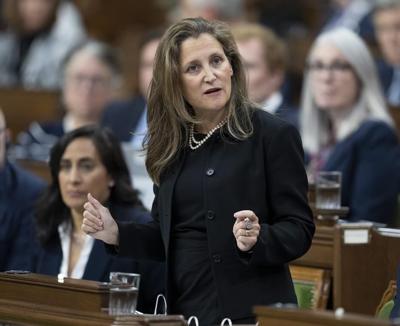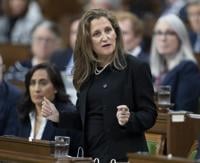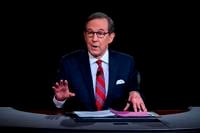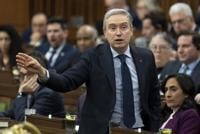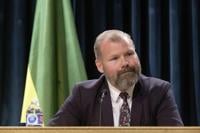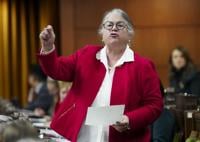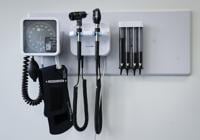OTTAWA - A federal budgetary surplus is on the distant horizon for the first time since the Liberals came to power, but the rest of the fall fiscal update clouds that picture with the risk of recession and promises to spend a lot more to support Canada's transition to a clean and green economy.
The Liberals would also need to fight another election before getting there.
The fall economic statement that Finance Minister Chrystia Freeland presented in the House of Commons on Thursday, alongside a bill to implement it, includes new measures to spur clean energy investment and help Canadians struggling to keep up with the rising cost of living.
Overall, the mini-budget proposes relatively modest new spending amid growing political pressure to demonstrate fiscal restraint after massive pandemic-era spending.
It also contains a more pessimistic alternative outlook and warnings that plans go awry.
The $30.6 billion promised over the years leading up to 2027-28 includes money set aside for three previously announced affordability measures: temporarily doubling the GST credit, topping up the housing benefit and a dental-care benefit meant as a stopgap on the way to a broader dental-care program baked into the agreement the Liberals made with the New Democrats.
The update was seized with matching clean energy investments and tax incentives made recently in the United States through its Inflation Reduction Act.
It also pledged some more affordability measures, such as permanently eliminating federal interest charges on student loans and revamping the Canada Workers Benefit so that people who qualified for it in the previous year can receive an advance instead of waiting to file their tax returns.
In her speech to the House of Commons on Thursday, Freeland reiterated the federal government鈥檚 commitment to stay out of the way of the central bank鈥檚 efforts to battle rapidly rising prices.
"As the Bank of Canada fights inflation, we will not make its job harder," Freeland said in a copy of her speech provided in advance. "We are compassionate and we are also responsible."
NDP Leader Jagmeet Singh said that while he believes the fiscal update falls short of the help needed by Canadians suffering under higher prices on essential goods, his caucus plans to support the Liberal minority government's implementation bill.
Opposition leader Pierre Poilievre panned the document, arguing it will fuel inflation.
"Conservatives will stand for the common people," Poilievre said inside the House. "Their paycheques, their homes, their savings, and we will vote against this inflationary scheme."
Scotiabank鈥檚 director of fiscal and provincial economics, Rebekah Young, said the new measures will not fan the flames of high inflation given much of the spending will not flow this year.
"What we see today isn't itself going to drive inflation," said Young.
Decades-high inflation has put pressure on the federal government to avoid fuelling inflation with additional spending as the Bank of Canada raises interest rates.
The Liberals are also proposing a two per cent tax on corporate stock buybacks in an effort to encourage companies to invest in their domestic operations and workers.
Freeland said the Liberal government felt that was the right policy to incentivize investment.
"We want to see big Canadian companies taking their profits and investing them in the productive capacity of Canada and investing them in their workers," Freeland said during a news conference in Ottawa.
"That tax on share buybacks is designed to do precisely that."
The fiscal update also commits another $1 billion in disaster relief this fiscal year to help with recovery efforts from the damage caused by post-tropical storm Fiona in Atlantic Canada and eastern Quebec.
As a growing number of economists forecast an impending recession, the budget update outlined multiple scenarios that may play out and based its outlook for the economy on the average of private economic forecasts.
The baseline scenariosuggests the Canadian economy will grow by 3.2 per cent in 2022, which is down from the April budget forecast of 3.9 per cent. It will be followed by significantly slower growth of 0.7 per cent in 2023, which the April budget forecast had put at 3.1 per cent.
The "downside scenario," which considers high inflation rates sticking around for longer and prompting even tighter monetary policy, places Canada in a "mild recession" next fiscal year.
For the current fiscal year, the mid-year budget update is forecasting a $36.4-billion deficit, which is about $16 billion lower than anticipated in the spring budget thanks to high inflation and a strong economic recovery boosting government revenue.
The fiscal update says the federal debt as a share of GDP is 42.3 per cent in fiscal 2022-23 and projected to steadily decline until reaching 37.3 per cent in fiscal 2027-28.
The federal government is forecasting a budget surplus of $4.5 billion during the 2027-28 fiscal year, although the more pessimistic scenario says that year will bring a deficit of $8.3 billion.
This marks the first time the Liberals have forecast a balanced budget since coming into power in 2015, preferring in previous documents to stress the declining debt-to-GDP ratio instead.
Prime Minister Justin Trudeau, when campaigning as Liberal leader that year, had promised to run just three years of "modest, short-term" deficits before balancing the budget in 2019.
Freeland acknowledged the significance of looking ahead to being back in black.
"It's by design insofar as it is the result of our consistent and strong investments in Canadians and the Canadian economy," Freeland told reporters. "In particular, I would say it is thanks to Canada's remarkably strong recovery from the COVID recession."
Getting there, however, may be challenging amid growing risks of a global recession, said Young.
The economist said the Canadian economy is heavily influenced by global economic forces, including central banks raising interest rates to clamp down on high inflation.
"These exogenous drivers could really sway how things look over the next year or two," Young said.
The forecast also does not take into consideration future spending plans, adding another layer of risk around whether the federal government does indeed post a surplus.
The fiscal update suggests more investments in clean energy will be outlined in the coming spring budget.
This report by 香港六合彩挂牌资料 was first published Nov. 3, 2022.

